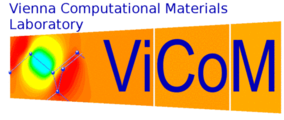


Our main objective is the computational study of collective phenomena due the interplay of dimensional confinement, electronic correlations, spin-orbit coupling and electron-lattice interactions at surfaces, interfaces and heterostructures of transition metal (TM) oxide perovskites. Besides the technological importance, these systems represent a rich playground for fundamental research. Describing the many, often competing collective phenomena in reduced dimensions requires methods at the frontier of current theoretical solid state physics, and we will here benefit from the many body techniques developed in P02-P05.
In the first part of the project, we aim to characterize our materials, studying how the collective phenomena evolve from the bulk to the surface, when changing the TM ion. Moving from the 3d to the 5d TM rows of the periodic table, the localization of the d orbitals, and hence electronic correlations, decrease, whereas the strength of the spin-orbit coupling increases. Lattice instabilities and magnetism can be tuned moving along the rows. As a starting point, we have identified optimal target materials, in which one of the above interaction channels dominates: Sr-iridates, Na-osmate, nickelates; SrTiO3 and the sp perovskite BaBiO3. In the second part of the project, we will exploit our understanding of the surfaces to construct heterostructures and multilayers with controlled interface properties, by juxtaposition of 2D building blocks with distinct interaction strengths.
|
Boeri, Lilia |
Graz University of Technology |
 |
Franchini, Cesare |
University of Vienna |
|
Toschi, Alessandro |
Vienna University of Technology |